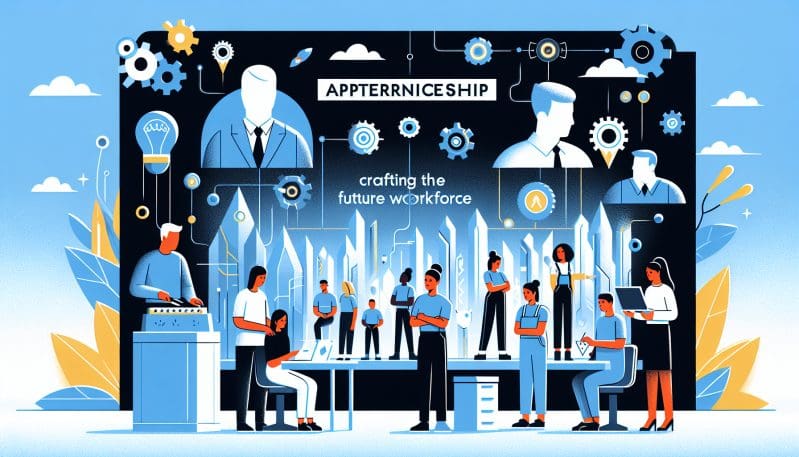Navigating the Nuances of Mentorship within Apprenticeships: Crafting the Future Workforce
- Home
- Navigating the Nuances of Mentorship within Apprenticeships: Crafting the Future Workforce
- Editors Desk
- March 6, 2024
- 0 Comments
In the constantly evolving landscape of the modern workplace, the gap between education and employment has never been more poignant. As industries clamor for talent that can keep pace with technological advancements and shifting market demands, apprenticeships have emerged as a vital bridge across this divide. Yet, it’s the nuanced interplay of mentorship within these programs that truly crafts and cajoles the nascent skills of the apprentice, transforming them into tomorrow’s industry leaders.
Apprenticeships, in their essence, combine hands-on training with job-related instruction, but the heart of this process – the mentorship – is what defines the success of these initiatives. The mentor, often a seasoned professional with years of experience, is not just a teacher or a supervisor; they are a guide, a role model, and at times, a confidant. Their multifaceted role encompasses the transmission of tacit knowledge that cannot be gleaned from textbooks alone, the finessing of technical skills, and the instillation of professional values.
The expectations for mentors are high. They must be patient yet discerning, knowledgeable yet open to innovation. However, the challenge lies in the inherent dichotomy of this relationship – balancing the transmission of established methodologies while encouraging critical thinking and adaptability, traits imperative for navigating the future workforce.
Effective mentor-mentee relationships have shown to significantly impact an apprentice’s growth, with numerous case studies underscoring this symbiosis. For instance, a study of a group of manufacturing apprentices revealed that those with proactive mentors were far more likely to innovate in their processes than those without. These findings are reinforced by expert opinions, like that of the CEO of TechBridge, who emphasizes the transformative power of a mentor’s influence on an apprentice’s career trajectory.
Despite the clear benefits, not all mentorship in apprenticeships is created equal. Some programs, lacking structure and clarity, fail to provide the support necessary for both parties to thrive. This is where the crux of design comes into play. Companies must craft mentorship programs that align with their business objectives while fostering an environment ripe for continuous learning. This means mentorship programs that are flexible, responsive to industry changes, and personalized to individual apprentice needs.
The approach to designing such programs is as diverse as the workplaces themselves, but common strategies include establishing clear mentorship guidelines, providing training for mentors, and integrating feedback mechanisms for both mentors and apprentices. By prioritizing these elements, companies can ensure that mentorship within apprenticeships is not merely a footnote but a headline of their talent development strategy.
In the end, apprenticeships, bolstered by robust mentorship, are more than just a means to fill positions – they are a commitment to cultivating a workforce capable of meeting tomorrow’s challenges. The onus is now on organizations to recognize and elevate the role of mentorship within these programs, thereby ensuring a future where both businesses and workers can thrive amid the relentless pace of change.

